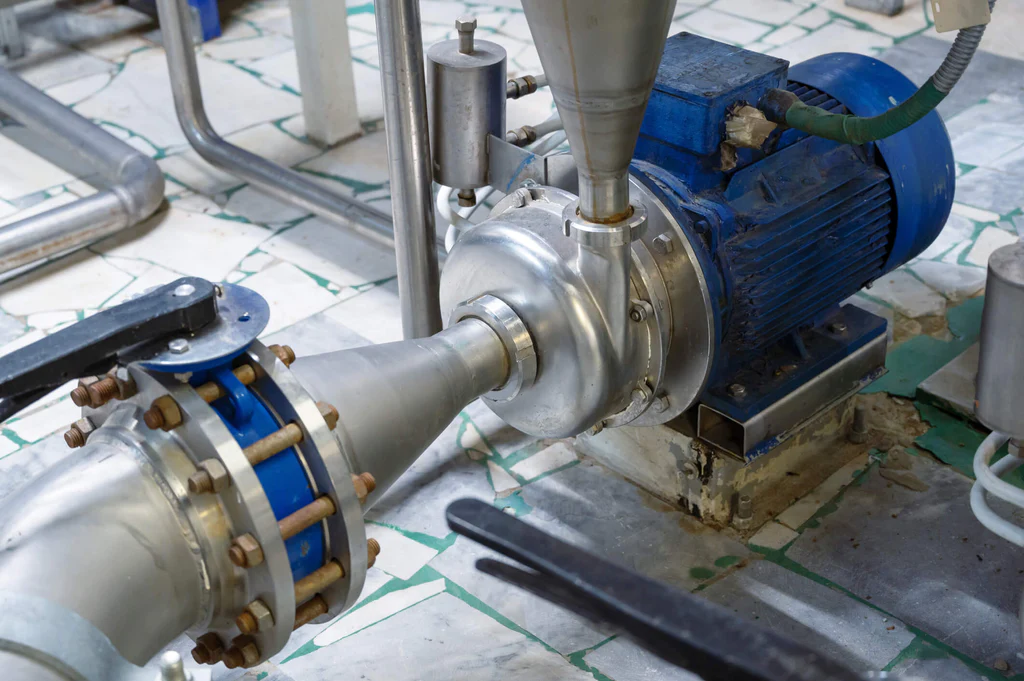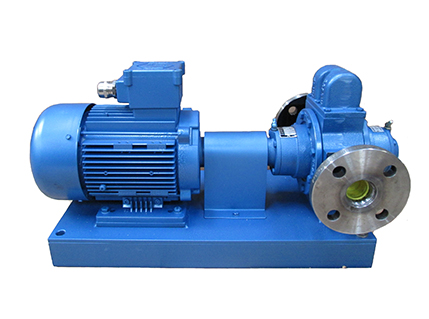Product Description
Low Noise Operation Oil Sealed Rotary Vane Vacuum Pump
Product Description
The 2X pump is 1 of the basic equipment used to extract gas from sealed containers and obtain a vacuum. It can be used alone or as a front-end pump for booster pumps, diffusion pumps, molecular pumps, etc. It can be used for vacuum smelting, vacuum welding, vacuum impregnation, coating, vacuum drying, as well as vacuum operations in industries such as chemical pharmaceuticals and electric vacuum devices.
Product Parameters
|
Model |
2X-4A |
2X-8A |
2X-8 |
2X-15 |
2X-30A |
2X-70A |
|
Pumping speed(L/S) |
4 |
8 |
8 |
15 |
30 |
70 |
|
Ultimate Pres-(≤Pa) |
≤6×10 -2 |
|||||
|
Motor Power(kw) |
0.55 |
1.1 |
1.1 |
2.2 |
3 |
5.5 |
|
Temperature Rise(ºC) |
≤40ºC |
|||||
|
LW Noise dB(A) |
≤75 |
≤78 |
≤78 |
≤80 |
≤82 |
≤86 |
|
Inlet Diam- (mm) |
Φ25 |
Φ25 |
Φ40 |
Φ40 |
Φ65 |
Φ80 |
|
Rotational (rpm) |
450 |
550 |
320 |
320 |
450 |
420 |
|
Injection Amount of (L) |
0.7 |
0.9 |
2 |
2.8 |
2 |
4.2 |
|
Size (cm) |
55×34×41 |
55×43×44 |
79×43×54 |
79×53×54 |
78×50×56 |
91×65×70 |
|
Weight (Kg) |
54 |
70 |
135 |
196 |
240 |
428 |
|
Type of protection(IP) |
55 |
55 |
55 |
55 |
55 |
55 |
Company Profile
HangZhou Sifang Vacuum Equipment Co., Ltd. specializes in the production of vacuum furnaces, vacuum pumps, steel drums and other products.”Sifang” is the registered trademark of the company’s products.
our company is 1 professional vacuum equipment manufacturer in HangZhou, China. We specialize in vacuum pumps, furnaces, systems and components for diverse applications. We produce rotary vane vacuum pumps, water ring vacuum pumps, reciprocating vacuum pumps, roots vacuum pump units, vacuum heat treatment furnaces, vacuum aluminum brazing furnaces, high temperature brazing fur- naces, vacuum sintering furnaces, monocrystalline silicon furnaces and other products. All these vacuum equipment are widely used in aviation, aerospace, military, railway, automobile, machinery, mold, electronics, metallurgy, scientific research and other fields.
We have professional engineer support, high efficiency sales team and competitive price superiority, and attract customers from all over the world, we export to over 40 countries, including Europe, Poland, Serbia, Turkey, Russia, USA, Mexico, Brazil, India, Thailand, Middle east and South Africa.
After several years’ development, We have achieved great progress, we are equipped with the AutomaticCNCmachines and multi-func- tion testing machines. Our R&D department provide the strong tech- nical support and enable us to receive some 0 E M, O D M projects. We can produce at least 3000 sets vacuum equipment per year. With our innovative and energy-efficient vacuum equipment that is put to work in a multitude of manufacturing and process applica- tions, we also offer you a comprehensive suite of CHINAMFG ser- vices to complement our products.
FAQ
1.Q: Are you a factory or trading company?
A: We are a factory and we have professional team of workers,Designers and inspectors.
2.Q:Do you accept custom?
A:Of course.We have professional teams who make your designs,photos,imagines and OEM orders into real production.
3.Q:What’s your advantages?
A: Quick response to your enquiry,
High quality control,
Reasonable price,
Timely delivery,
Excellent after-sales service,
OEM/ODM are welcome
4.Q:What’s your shipping terms?
A:If you need to ship by air,we can use DHL,UPS,FedEx,TNT or EMS.If you need to ship by sea,we have many good forwarders to work with,they can provide the best price for you.
/* January 22, 2571 19:08:37 */!function(){function s(e,r){var a,o={};try{e&&e.split(“,”).forEach(function(e,t){e&&(a=e.match(/(.*?):(.*)$/))&&1
| After-sales Service: | Online Support |
|---|---|
| Warranty: | 1 Year |
| Oil or Not: | Oil |
| Structure: | Vacuum Pump |
| Exhauster Method: | Entrapment Vacuum Pump |
| Vacuum Degree: | Vacuum |
| Customization: |
Available
|
|
|---|

Can Rotary Vane Pumps Handle Corrosive Gases or Vapors?
Rotary vane pumps are generally not suitable for handling corrosive gases or vapors due to their construction and materials. Here’s a detailed explanation:
– Construction: Rotary vane pumps consist of a rotor with vanes that slide in and out of slots within the rotor. The pumping chamber is sealed by these vanes, creating the necessary vacuum or pressure. The internal components of rotary vane pumps are typically made of materials such as cast iron, steel, or aluminum. While these materials are suitable for many applications, they may not withstand the corrosive effects of certain gases or vapors.
– Corrosion Concerns: Corrosive gases or vapors can react with the internal components of the pump, leading to material degradation, erosion, or chemical reactions. This can result in the formation of deposits, pitting, or damage to the pump’s surfaces. Corrosion can compromise the pump’s performance, efficiency, and longevity. In some cases, it can also introduce contaminants into the pumped medium, affecting the quality of the process or downstream equipment.
– Material Compatibility: The compatibility of the pump’s internal materials with the corrosive gases or vapors is a critical consideration. Many corrosive gases or vapors require specialized materials such as stainless steel, Hastelloy, or other corrosion-resistant alloys to withstand their effects. Rotary vane pumps typically do not have internal components made from these materials, making them unsuitable for handling corrosive substances.
– Alternative Solutions: If corrosive gases or vapors need to be handled, alternative pump technologies specifically designed for such applications may be more appropriate. For example, chemical-resistant pumps made from materials compatible with the corrosive substances, such as diaphragm pumps, magnetic drive pumps, or certain types of centrifugal pumps, are commonly used. These pumps incorporate corrosion-resistant materials and specialized sealing mechanisms to ensure safe and reliable operation.
– Protective Measures: In some cases, it may be possible to use rotary vane pumps for applications involving mildly corrosive gases or vapors by implementing protective measures. This can include installing chemical traps or filters in the pump system to remove or neutralize corrosive substances before they reach the pump. However, the effectiveness and feasibility of such measures depend on the specific application and the level of corrosion resistance required.
It’s important to consult with pump manufacturers or industry experts to determine the most suitable pump technology for handling corrosive gases or vapors. They can provide guidance on selecting the appropriate pump materials and design to ensure safe and efficient operation in corrosive environments.
Overall, while rotary vane pumps offer many advantages in various applications, they are generally not recommended for handling corrosive gases or vapors due to the potential for material damage and performance degradation. Using pumps specifically designed for corrosive applications is crucial to maintain operational integrity and prevent costly failures.

How Do You Maintain and Service a Rotary Vane Pump?
Maintaining and servicing a rotary vane pump is essential to ensure its optimal performance and prolong its operational life. Here’s a detailed explanation of the maintenance and servicing procedures for a rotary vane pump:
– Regular Inspection: Perform regular visual inspections of the pump to check for any signs of wear, leaks, or damage. Inspect the pump housing, vanes, seals, and connections. Look for any loose or worn parts that may require attention.
– Lubrication: Proper lubrication is crucial for the smooth operation of a rotary vane pump. Follow the manufacturer’s guidelines regarding the type and frequency of lubrication. Typically, the pump requires lubrication with a suitable oil or grease. Ensure that the lubrication level is adequate, and monitor the condition of the lubricant. Replace or replenish the lubricant as recommended.
– Vane Replacement: The vanes in a rotary vane pump can wear down over time and may need to be replaced periodically. Inspect the vanes regularly and look for signs of wear, such as cracks or reduced thickness. Replace the vanes if necessary, following the manufacturer’s instructions.
– Cleaning: Keep the pump and its components clean to prevent the buildup of debris or contaminants. Use a suitable cleaning agent and a soft cloth or brush to clean the pump housing, vanes, and other parts. Avoid using harsh chemicals or abrasive materials that may damage the pump surfaces.
– Filter Maintenance: If the rotary vane pump has an inlet filter, inspect and clean or replace it regularly. The filter prevents debris from entering the pump and affecting its performance. Follow the manufacturer’s recommendations for filter maintenance and replacement intervals.
– Seals and Gaskets: Check the seals and gaskets of the pump for signs of wear or leakage. Replace any damaged or worn seals to maintain proper sealing and prevent fluid or gas leaks.
– Motor and Electrical Connections: Inspect the motor and electrical connections of the pump for any loose or damaged wires. Ensure that the electrical connections are secure and free from corrosion. If any issues are found, consult a qualified technician or electrician for repairs.
– Operating Conditions: Ensure that the pump is operated within its specified operating conditions. Avoid subjecting the pump to excessive temperatures, pressures, or fluid viscosity that may exceed its capabilities. Adhere to the recommended operating parameters to prevent premature wear or damage to the pump.
– Service and Calibration: Periodically, consider having the rotary vane pump serviced and calibrated by a qualified technician. This ensures that the pump is operating at its optimal performance and accuracy. The technician can perform maintenance tasks, inspect internal components, and make any necessary adjustments or repairs.
It’s important to consult the manufacturer’s guidelines and recommendations specific to your rotary vane pump model for detailed maintenance and servicing instructions. Adhering to these guidelines and performing regular maintenance will help keep the pump in good working condition and extend its service life.


editor by Dream 2024-05-07
by
Leave a Reply